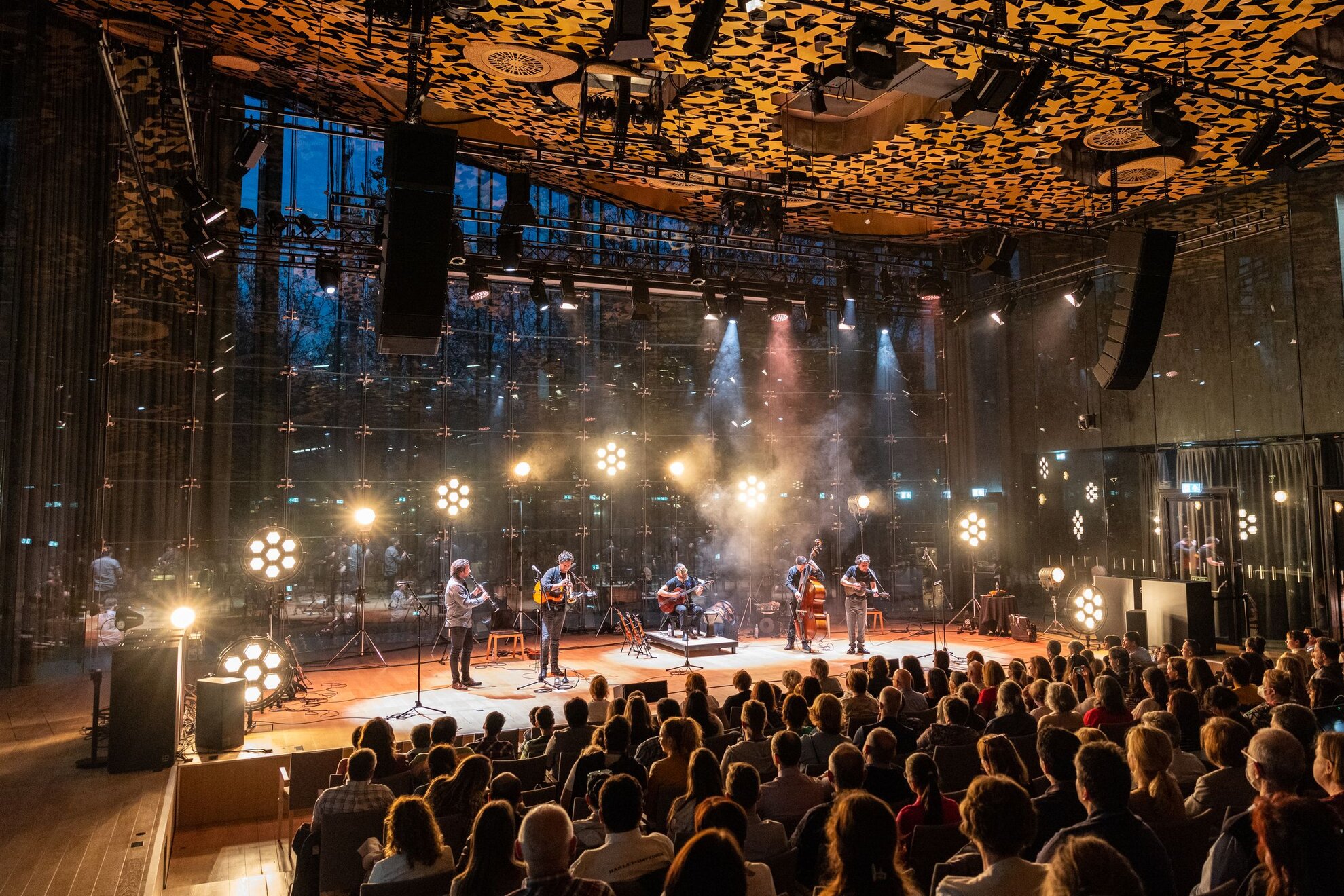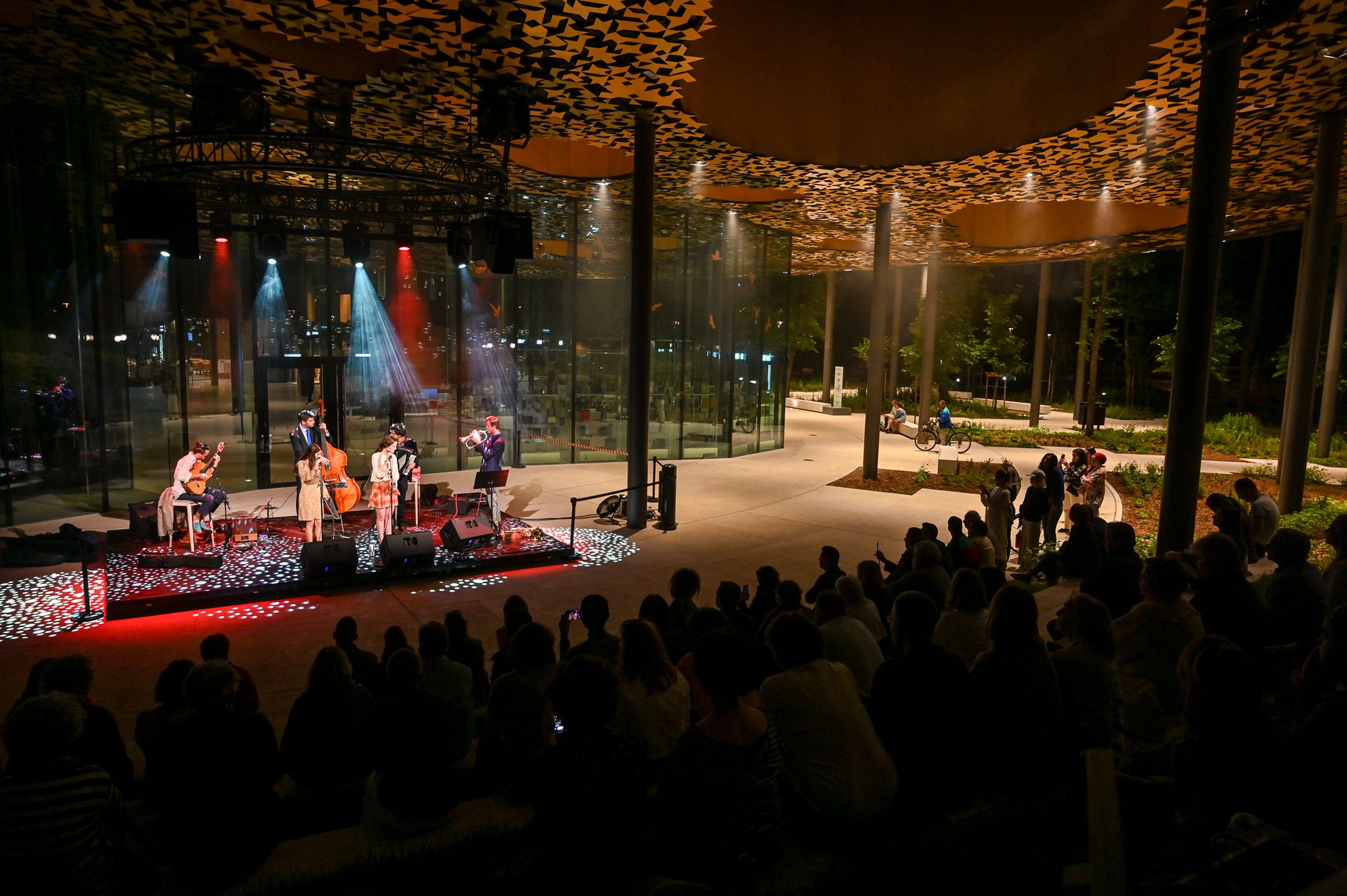Having already enthusiastically reported on the permanent exhibition at the House of Hungarian Music and the recently completed Creative Auditorium, it’s great news that there will be a special exhibition from this October covering the history of Hungarian pop, from 1957 and the first domestic record, to 1993, and the first Sziget Festival.
There will be no shortage of concerts in the autumn either, allowing the audience to discover new genres and lesser-known songwriters. Such is Icelandic band ADHD, performing in October, who play a melancholic mix of Scandinavian jazz, rock and post-rock, but you can also catch The Bad Plus, who interpret songs of David Bowie, Nirvana and the Pixies in avant-garde jazz and classical-contemporary forms.
Good news for those who prefer a slower tempo and American folk rock –
on 10 September, songwriter Mark Kozelek visits the House of Hungarian Music
with his Sun Kil Moon project.
Becca Stevens, who has
been touring since she was a child, mixes a whole range of genres, so her
October concert will include pop, jazz, funk and indie rock.
Mercury-nominated
Sam Lee, who draws inspiration
for his own music from the folk songs of the British Isles and the songbook of wandering Gypsies, is also coming, his October concert promises to be really
exciting. And talking about folk, one of the best-known figures of American
bluegrass and the progressive folk scene, mandolin player Chris Thile,
winner of a Grammy Award, gives his first concert in Hungary in October.
There will be no shortage of world music performers either, such as Fanfare Ciocărlia in September, a twisted brass band combining elements of jazz, pop and rock and even traditional wedding music. The music of Ustad Wasifuddin Dagar, who plays in the most ancient form of Indian classical music, the meditative Dhrupad style, should transport listeners to a completely different world. His concert in October is part of the Sacred Music Series.
In the last couple of years, K-pop has been conquering Hungary as well, this trend acknowledged by the House of Hungarian Music House, which stages award-winning LEENALCHI in September. Drums and rap dominate their music and, in addition to pop, they also draw inspiration from the new wave of the 1980s.
As for Hungarian music, on the first weekend of October, 75-year-old Ferenc Sebő stages a curatorial weekend at the House of Hungarian Music. Ágnes Herczku’s show, In Memory of Herczku, moves between theatre and folk, while Zorán’s intimate concert should also be memorable.

Indie pop band Bermuda mix different art forms, interpreting the novel Journey by Moonlight by Antal Szerb. The genre-crossing also extends to Esterházy x Esterházy – Harmonia Caelestis, with readings from the work of the same name by Péter Esterházy, combined with the works of Baroque composer Pál Esterházy.
The themed events continue into the autumn: for four days from 1 September, the stage is given over to classical music from the Far East as famous Japanese and Hungarian musicians give joint concerts as part of the Far-Eastern Classical-Music Festival. This urban series, which began in the spring, will continue in autumn with Veszprém. In addition to the musical and literary evening with Marci Likó and János Géczi, the Mendelssohn Chamber Orchestra and jazz guitarist Ferenc Snétberger play the closing gala concert.
In addition to the concerts, many other events await music lovers at the House of Hungarian Music, with sessions, film screenings, participatory music and singing, as well as free-university activities for adults.




